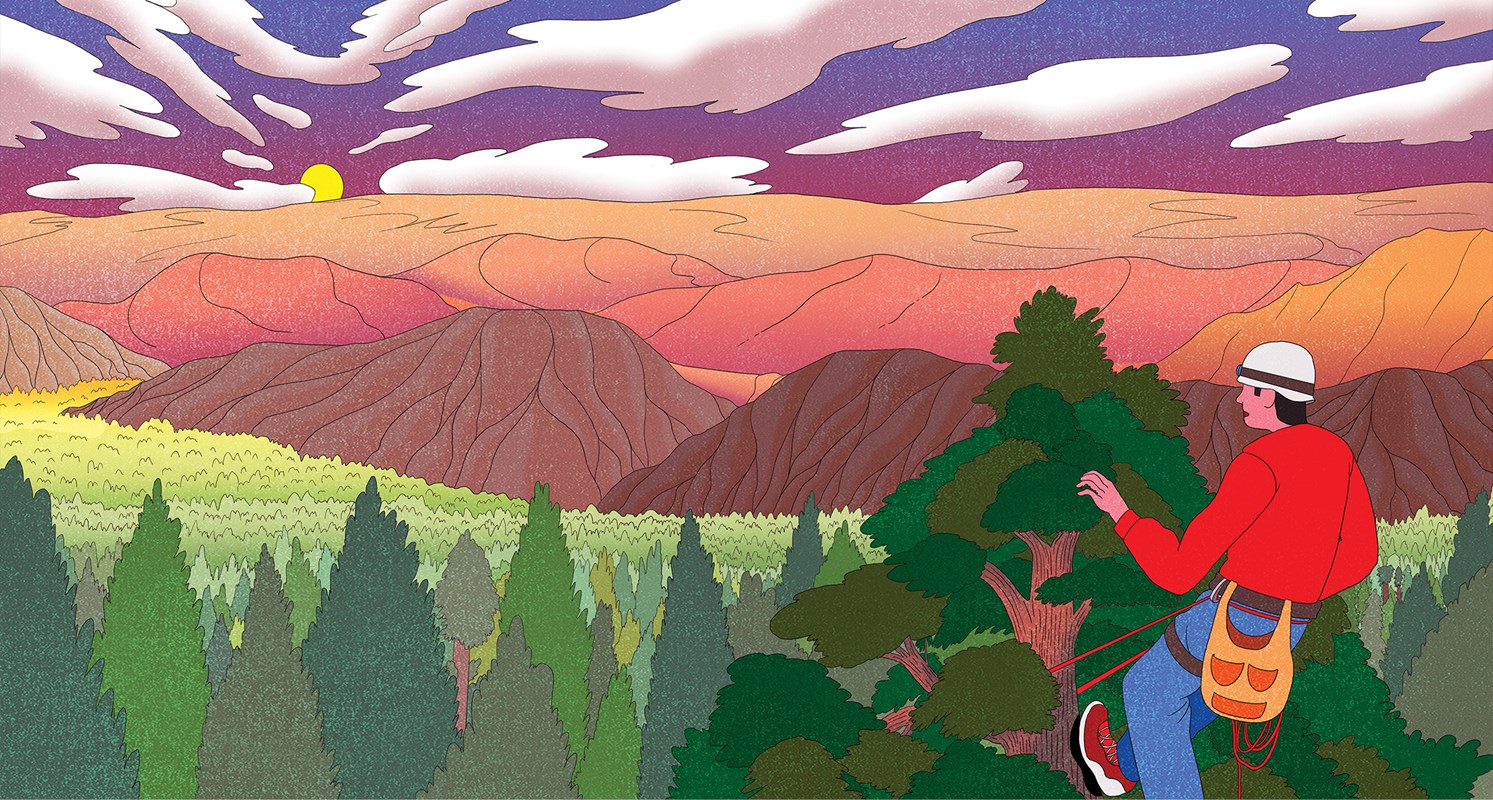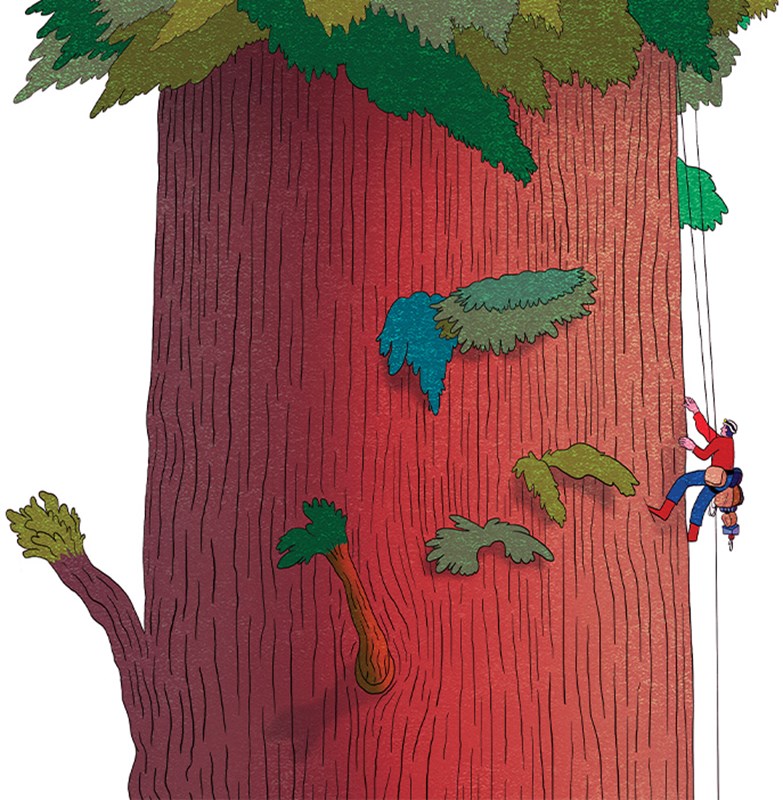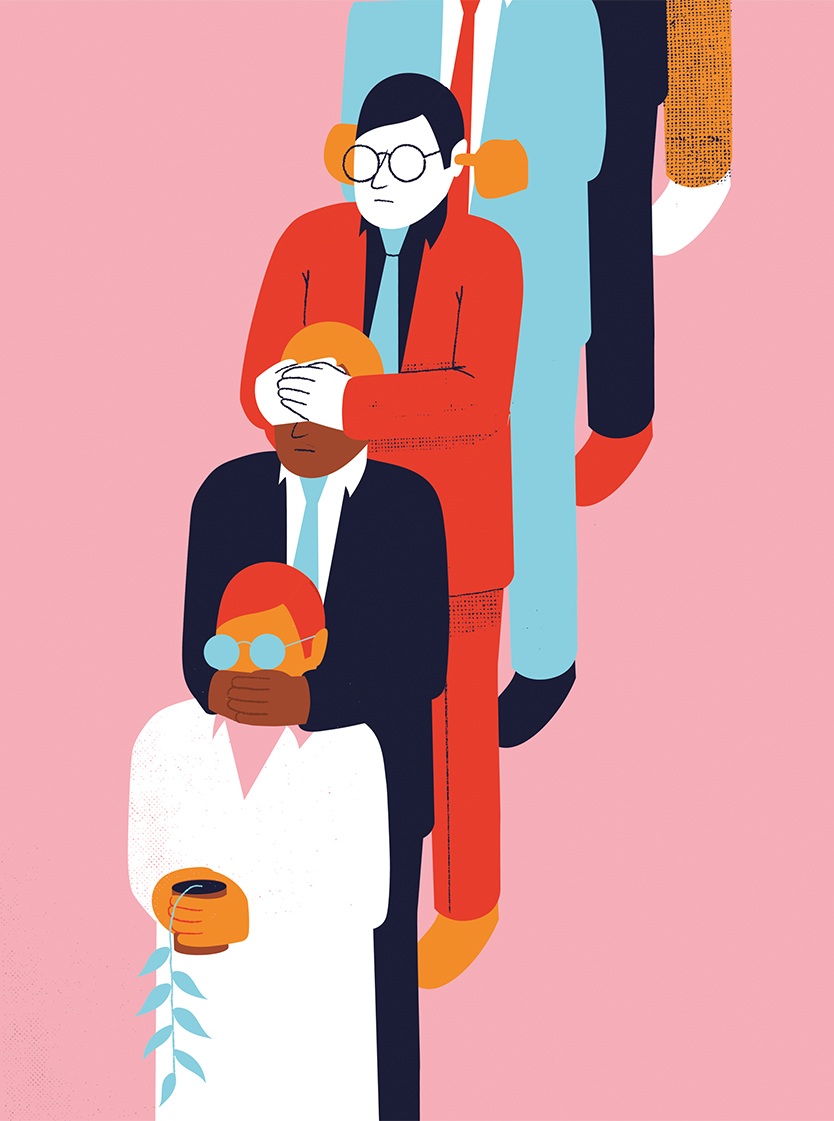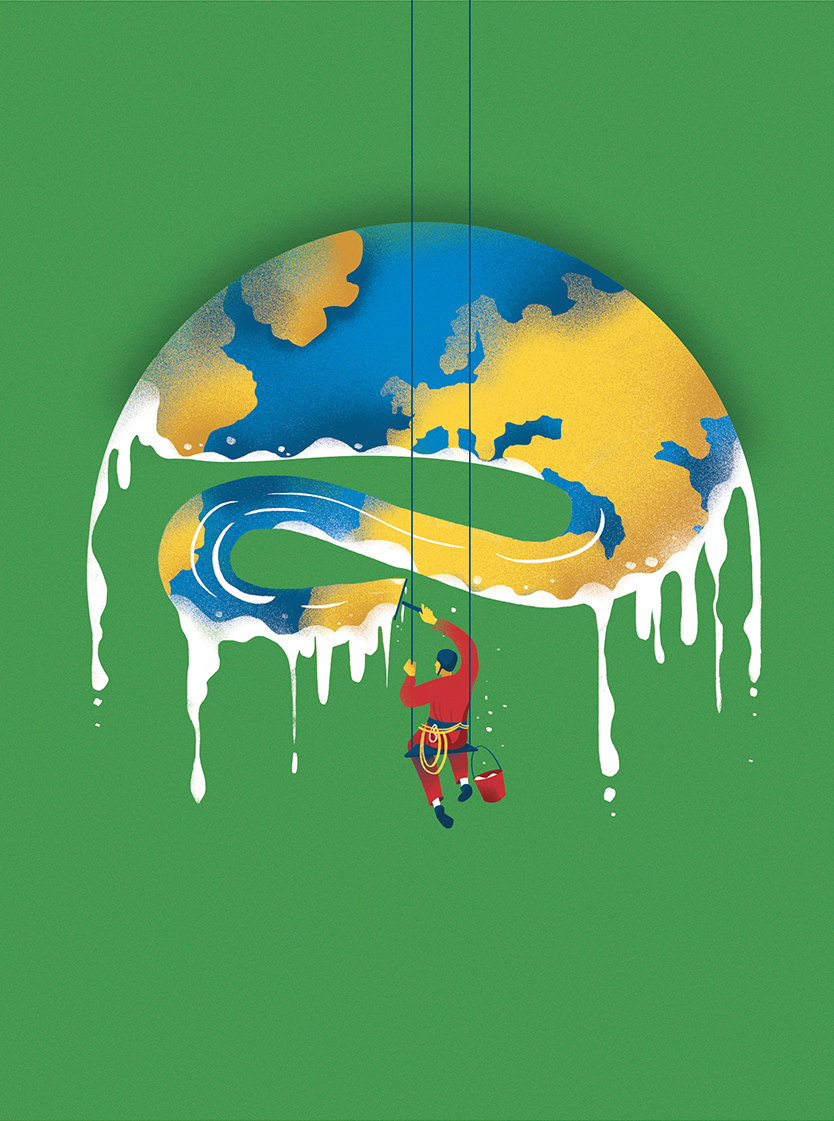The GIANT Tree of Life
By Sir Tim Smit KBE

Mark Wang

Sir Tim Smit, the co-founder of the Eden Project, conquers his fear of heights to scale a giant 4,500-year-old tree, and descends to ponder the failures made by each lost civilisation. We must be brave and rise to the challenge of climate change, he argues, and prove that the human race is worthy, before it is too late.
I have a philosophy that I adopted at the age of 37. A natural conservatism and desire to remain in, or close to, my comfort zone, was restricting my world view, narrowing my imagination and preventing me from meeting the most important people of all; the people I didn’t know I needed to meet. So, I decided to play a game of jeopardy with myself. I would start to accept every third invitation I received, and so an adventure of chance meetings began to change my life.
A call with an American friend led me to meet a man who believed he’d had a “near death” experience. In a dream, he had met a ghostly being, telling him that he had to return to protect the giant redwoods and that he was the one chosen to lead the efforts. He was a huge man with a big personality. I played along and so, later, he invited me to climb the biggest tree on Earth, which grows on private land in the Sierra Nevada mountains of California. I am terrified of heights. My youngest son told me this was a once-in-a-lifetime experience (and I was afraid he might be right!). He dared me to go, so I accepted the challenge, hoping to back out and nobly give my place to someone else.
Throughout the drive up into the High Sierras you travel through mile after mile of forest, and the bronze colours of dying pines sickened by the boring Pine beetles, millions and millions of trees all their resistance gone through thirst. At high altitude you start to see bits of green and then, suddenly, at the top of the accessible range you start to come across giants towering 300-plus feet into the sky with trunks 30 feet or more across, their bark deeply etched so a hand can slide into the soft crevices, resistant to fire as their propagation requires fire to crack open the cones.
“We must bravely change the way we are.. see it as the greatest adventure”
Sir Tim Smit KBE

It is interesting how, at a certain point, your fear of being thought a coward overpowers your fear of death! A bow and an arrow attached to fishing line was launched over the first great branch, 120 feet up … then a rope was pulled through and attached to my waist. Then I started to climb. My heartbeat was deafening: I dare not look down. At 260 feet up I stopped, and looked left into an infinite view of green, then right where, in the distance, I saw Death Valley, a metaphor for our times. Then, my hands felt the bark and I realised it had become soft and delicate like the neck feathers of an eagle or an owl.
This massive tree was full of life, and I started to let my imagination play. I was not thinking of the massive capillary action drinking up thousands of gallons of water a day, bringing water to the top of the tree; nor was I thinking of its enormous roots, writhing their way across dozens of yards fed by a mat of fungi, the mycorrhizal network linking this giant with all the trees in the neighbourhood, the so called ‘wood wide web’, so sensitive it can detect almost everything moving in the forest.

No… I was not thinking about the science, or its ecology, but of the nature of that life. The tree I was climbing had lived for around 4,500 years! It had outlived, to my knowledge (and that is pretty skimpy, so it will be far more), 37 civilisations around the world. Each of these had its aspirations and organising principles, and each peaked, then faded, before destruction or morphing into something else.
I stopped for a minute and shivered at the thought that each of these civilisations would have contained an establishment. Each would have been as clever as us, yet every time they were found wanting. Cast your mind back over the ruins, the records, the faces, heroes and villains… the moments that seemed so important in making us who we are today. They are but a speck in this giant’s history measured by mighty shifts in nature. Fires, storms, earthquakes and drought. This amazing tree had lived through them all.
But now we wonder… their cousins are dying by the million, and the weather may seem familiar, but the climate really is changing. You can argue if you like, you can say it is an opinion, a belief. This has happened many times before I hear someone say: ‘It’s nothing to do with us’.

How many times has this been heard in the past I wonder? What is it we could change? What vanities or appetites should we suppress? What training can we give our youngsters to encourage them to think, to fully explore, what it is to be a citizen in the natural world? As I descended, I reflected on my little act of bravery and felt elated. Later, in calmer mood, I reflected on my bravery, and felt ashamed.
Bravery is actually about standing up for what you believe to be right, regardless of what others may say and think. You wonder deep in your heart, what we could achieve if all of us stood up and said “enough”. We must bravely change the way we are. We must see it as the greatest adventure and opportunity presented to us.
Above all else it is the most extraordinary chance to prove that we are worthy of the name we gave ourselves, Homo sapiens sapiens — the wise hominid, so wise that, like New York, we named ourselves twice.








